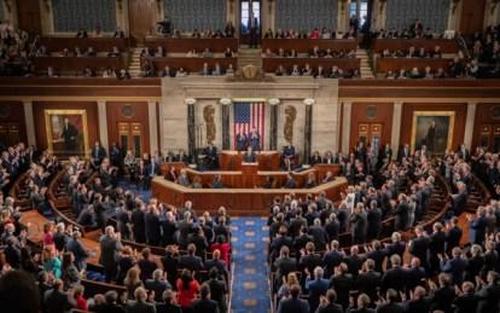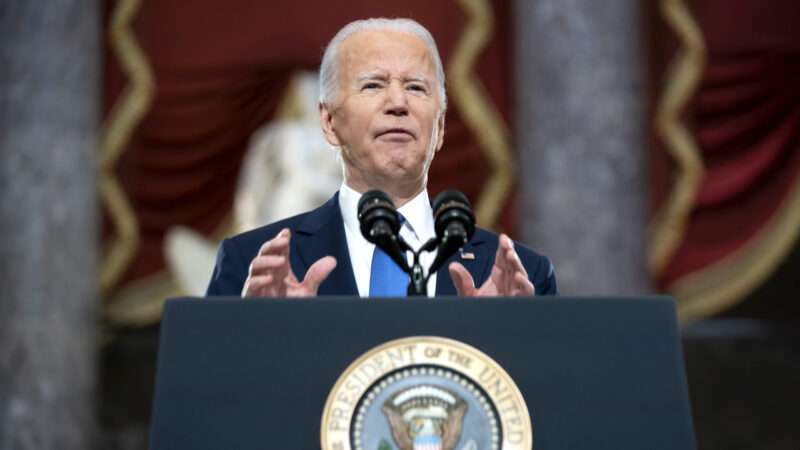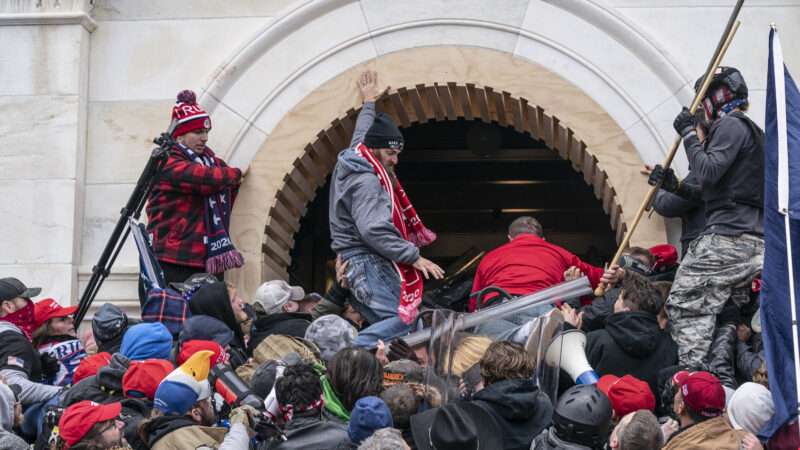Destroying A Democracy To Save it: Democrats Call For The Disqualification Of Dozens Of Republican Members
Below is my column in the Hill on the continued calls to disqualify Republican members of Congress to prevent them from running for reelection. What is maddening is that Democratic groups and commentators are seeking to remove as many as 120 Republicans from the ballots in the name of democracy.
It is like burning books in the name of literacy.
Yet, on this anniversary of the January 6th riot, members of Congress and Democratic groups want to block voters from reelecting their preferred representatives. Like villages in Vietnam, it appears that some members and activists believe that you have to destroy democracy to save it from itself.
Here is the column:
This year, the Biden administration joined many in the United States in criticizing the mass disqualification of 583 candidates in Iran by the Guardian Council. The Iranian elections (like elections in other countries like China and Venezuela) are democratic only in the most artificial sense: You can freely vote from a pre-selected list of candidates.
Electoral disqualification systems are generally anathema to democratic values, but some in the United States are now toying with the idea for the 2022 or 2024 elections. While more modest than the Iranian model, the Democratic calls for disqualification are just as dangerous. What is most maddening is that this anti-democratic effort is cloaked in democratic doublespeak.
This week, Democratic lawyer Marc Elias predicted that 2022 would bring a renewed interest in disqualifying Republican members from office based on an obscure Civil War-era provision. Elias — the former Hilary Clinton campaign general counsel — is a well-known figure in Washington who has been prominently featured in the ongoing investigation of Special Counsel John Durham. Elias has founded a self-described “pro-democracy” group that challenges Republican voting laws and pledges to “shape our elections and democratic institutions for years to come.”
In the age of rage, nothing says democracy like preventing people from running for office.
Elias and others are suggesting that — rather than defeat Republicans at the polls — Democrats in Congress could disqualify the Republicans for supporting or encouraging the Jan. 6 “insurrection.” Last year, Democratic members called for the disqualification of dozens of Republicans. One, Rep. Bill Pascrell (D-N.J.) demanded the disqualification of the 120 House Republicans — including House Minority Leader Kevin McCarthy(R-Calif.) — for simply signing a “Friend of the Court brief” (or amicus brief) in support of an election challenge from Texas.
These members and activists have latched upon the long-dormant provision in Section 3 of the 14th Amendment — the “disqualification clause” — which was written after the 39th Congress convened in December 1865 and many members were shocked to see Alexander Stephens, the Confederate vice president, waiting to take a seat with an array of other former Confederate senators and military officers.
Justin Reade of the North Carolina Supreme Court later explained, “[t]he idea [was] that one who had taken an oath to support the Constitution and violated it, ought to be excluded from taking it again.” So, members drafted a provision that declared that “No person shall be a Senator or Representative in Congress, or elector of President and Vice-President, or hold any office, civil or military, under the United States, or under any state, who, having previously taken an oath, as a member of Congress, or as an officer of the United States, or as a member of any State legislature, or as an executive or judicial officer of any State, to support the Constitution of the United States, shall have engaged in insurrection or rebellion against the same, or given aid or comfort to the enemies thereof.”
By declaring the Jan. 6th riot an “insurrection,” some Democratic members of Congress and liberal activists hope to bar incumbent Republicans from running. Even support for court filings is now being declared an act of rebellion. House Speaker Nancy Pelosi (D-Calif.) helped fuel this movement — before Jan. 6 even occurred — by declaring that the Republicans supporting election challenges were “subverting the Constitution by their reckless and fruitless assault on our democracy which threatens to seriously erode public trust in our most sacred democratic institutions, and to set back our progress on the urgent challenges ahead.”
Jan. 6 was a national tragedy. I publicly condemned President Trump’s speech that day while it was being given — and I denounced the riot as a “constitutional desecration.” However, it has not been treated legally as an insurrection. Those charged for their role in the attack that day are largely facing trespass and other less serious charges — rather than insurrection or sedition. That’s because this was a riot that was allowed to get out of control by grossly negligent preparations by Capitol Police and congressional officials. While the FBI launched a massive national investigation, it did not find evidence of an insurrection.
With an ominous mid-term election approaching, much of the effort among Democrats on the Hill and in the media has been to keep the enmity alive from Jan. 6. In what seemed almost a hopeful plea, the New York Times recently declared “Every Day is Now Jan. 6.” It made this tragedy sound like the political equivalent of a year-round Christmas store: Every day should involve a renewed gift of reminiscence and rage.
The saddest aspect of this politicization of the Jan. 6 riot is that many of us wanted a full, transparent, and apolitical investigation. House Republicans rejected that idea, but there remain many questions to be answered — which has not happened. Instead, we have an effort to encode the notion of an actual insurrection through mantra-like repetition.
The Constitution fortunately demands more than proof by repetition. In this case, it requires an actual rebellion. The clause Democrats are citing was created in reference to a real Civil War in which over 750,000 people died in combat. The confederacy formed a government, an army, a currency, and carried out diplomatic missions.
Conversely, Jan. 6 was a protest that became a riot.
That is not meant to diminish the legitimate outrage over the day. It was reprehensible — but only a “rebellion” in the most rhetorical sense.
More importantly, even if you adopt a dangerously broad definition of “insurrection” or “rebellion,” members of Congress who supported challenging the electoral votes (as Democrats have done in prior years) were exercising constitutionally protected speech.
Moreover, the Democrats cannot simply use their razor-thin majority to disqualify opponents willy-nilly. Punishments like expulsions take two-thirds votes, and any disqualifications can be challenged in the court.
Indeed, not long after ratification in 1869, Chief Justice Salmon P. Chase ruled in a circuit opinion that the clause was not self-executing. He suggested that allowing Congress to simply bar political opponents from office would be a form of punishment without due process and would likely violate the prohibition on bills of attainder.
As Democrats push to federalize elections and negate the laws in a couple dozen states, figures like Elias are now suggesting that Republicans could also be listed as “rebels” and barred from the ballot. Congress would then control not just how states conduct their elections but even who can appear on such ballots.
The renewed calls for disqualifications may be simply reckless rhetoric timed for the anniversary of the riot. After all, every day would not be Jan. 6 without the requisite rage. However, it is reason — not rage — that we need right now.
A recent poll showed that one in three Americans believes that violence against the government can be justified. It often seems like some want to trigger an actual rebellion by disenfranchising parts of our population. The fact is that there are people who traffic and profit in rage, and we are all the poorer for it.
Tyler Durden
Thu, 01/06/2022 – 18:20
via ZeroHedge News https://ift.tt/3n4lJrR Tyler Durden







